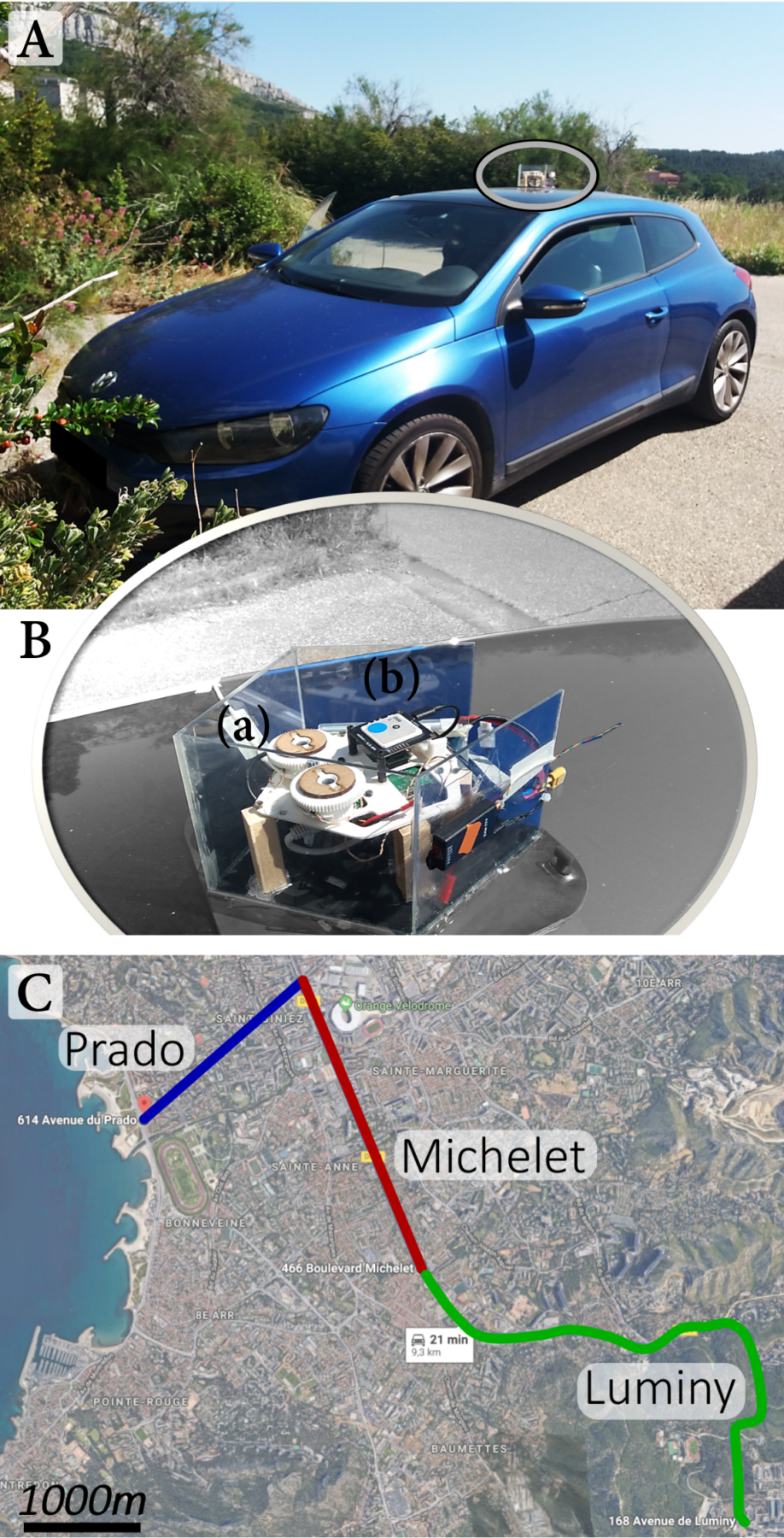Bio-inspired localization
Today, freeing oneself from any terrestrial or satellite infrastructure to navigate represents a major challenge in civil and military robotics, not only in urban environments where buildings and skyscrapers are screens to the waves, but also in more rural environments where the network of antennas is not very dense or even non-existent, but also in various theaters of operation where the infrastructures are inoperative, damaged, or jammed.
Beyond the military interest, navigation in environments not covered by the GPS (for “Global Positioning System”) or not mapped represents one of the ten greatest scientific challenges in robotics for the next ten years, according to the Science Robotics journal (Yang et al., 2018). Currently, terrestrial mobile robots use triple redundancy to locate themselves: SLAM-LIDAR, stereoscopic SLAM, GPS-IMU. This research work will aim to develop and implement new biomimetic strategies, directly inspired by ants of the desert, for the return to the base of mobile robots or autonomous vehicles in complex environments.
At a time when many manufacturers are also developing autonomous freight vehicles in the city for last mile delivery applications: such an ant-inspired algorithm would then find all its interest in the urban environment as an additional redundancy to the robot to find its way back or to help the robot to locate itself in the city.
Publications
- Dupeyroux, J., Viollet, S., & Serres, J. R. (2020). Bio-inspired celestial compass yields new opportunities for urban localization. In 2020 28th Mediterranean Conference on Control and Automation (MED) (pp. 881-886). IEEE. 15-18 September 2020, Saint-Raphaël, France DOI: 10.1109/MED48518.2020.9183367
- Dupeyroux, J., Viollet, S., & Serres, J. R. (2019). An ant-inspired celestial compass applied to autonomous outdoor robot navigation. Robotics and Autonomous Systems, (117), 40-56.
DOI: 10.1016/j.robot.2019.04.007 - Serres, J. R., & Viollet, S. (2018). Insect-inspired vision for autonomous vehicles. Current opinion in insect science, (30), 46-51.
DOI: 10.1016/j.cois.2018.09.005 - Yang, G. Z., Bellingham, J., Dupont, P. E., Fischer, P., Floridi, L., Full, R., Jacobstein, N., Kumar, V., McNutt, M., Merrifield, R., Nelson, B. ., Scassellati, B., Taddeo, M., Taylor, R., Veloso, M., Wang, Z. L., & Wood, R. (2018). The grand challenges of Science Robotics. Science robotics, 3(14), eaar7650.
DOI: 10.1126/scirobotics.aar7650
